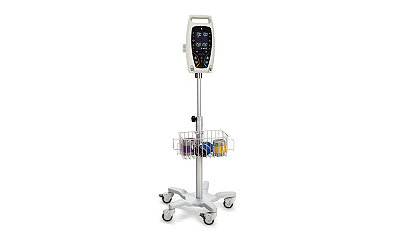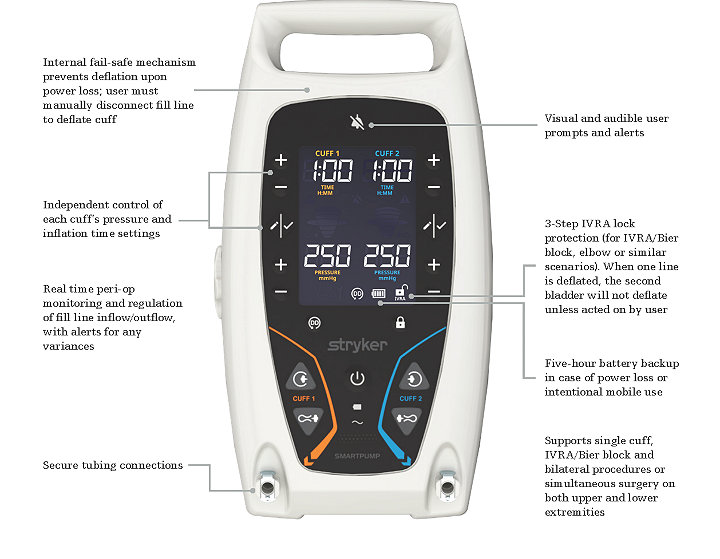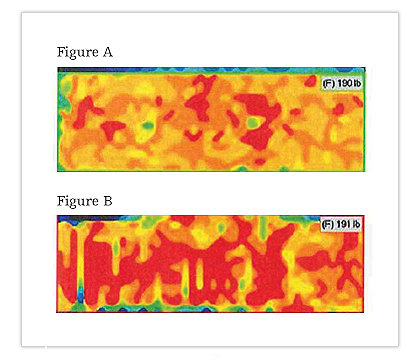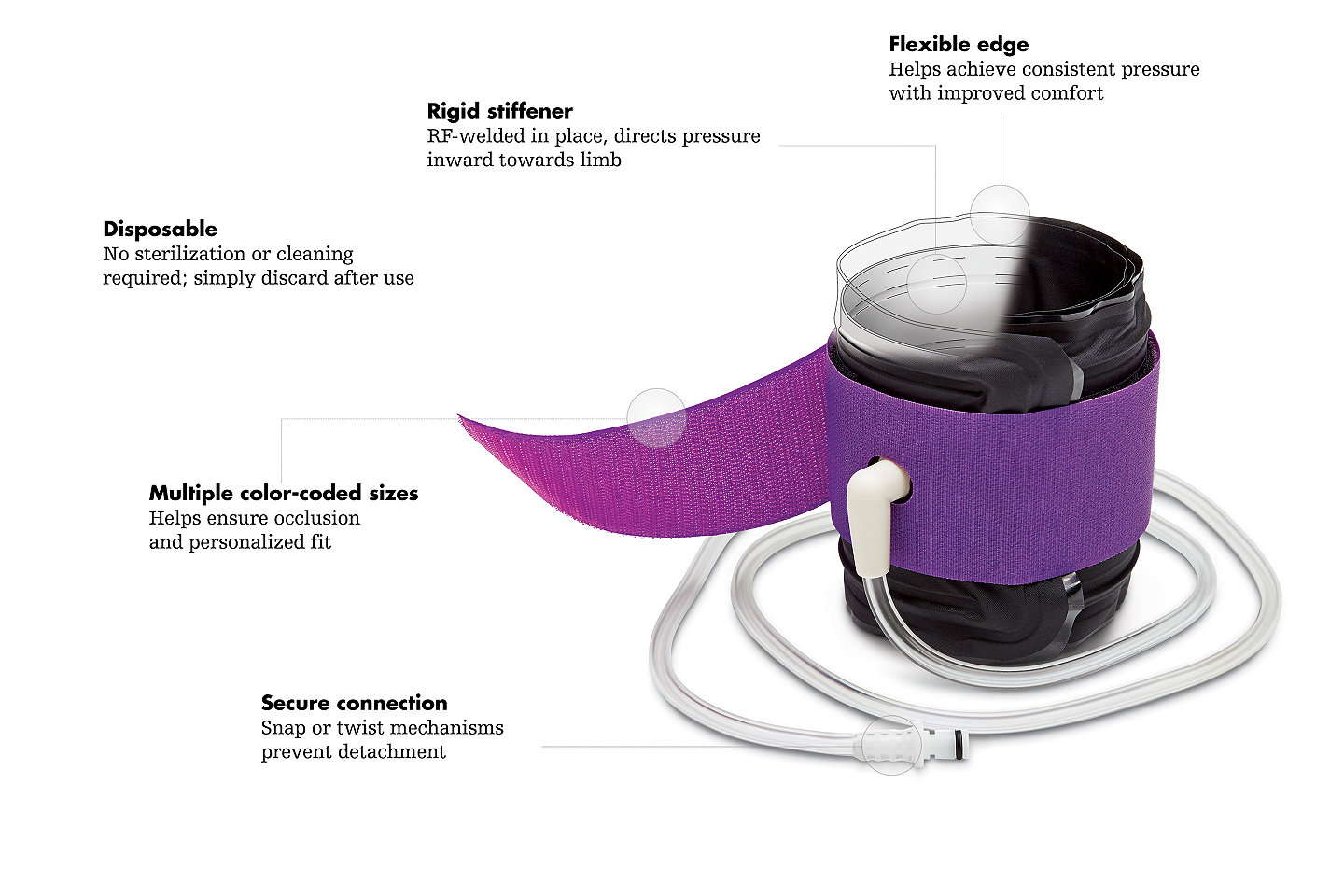SmartPump Tourniquet System
Keeping pressure in check
Reliable and intuitive system, complete with multiple built-in safety checks.

SmartPump Tourniquet System
We know that best practices for surgical tourniquets require precise balance between providing a bloodless field and protecting patient wellbeing, including delicate tissues. That’s why Stryker designed the high performance SmartPump Tourniquet System to be reliable and intuitive, complete with multiple built-in safety checks.
EvenAIRe Technology Stiffeners in the corresponding Color Cuff Tourniquet helps achieve occlusion at the lowest effective pressure setting, potentially reducing complications associated with higher pressure levels1-4
Limb occlusion pressure (LOP) is determined by you, not based on time-delayed pre-op readings
Three-second self calibration upon start up automatically detects any issues with the pump, cuff or inflow/outflow line
Provides comprehensive documentation of periop data
Three step IVRA lock protection (for IVRA/Bier block, elbow or similar scenarios). When one line is deflated, the second bladder will not deflate unless acted on by you


Not all cuffs
are created equal
Even pressure distribution
Unlike other cuffs, our stiffener is RF-welded in place which delivers more consistent pressure distribution across the cuff’s entire surface, where as variations in high (red) and low (green) pressure leak paths can be seen with the competing cuff (as seen in Fig. A).1
Optimizing occlusion
Enables use of lower pressure settings; e.g., reaching a compression of 190 lbs ata pump pressure 45 mm-Hg lower than the competing cuff (as seen in Fig. B).1

1. Stryker Instruments, Kalamazoo, MI. “Compression Performance of the Stryker Color Cuff Tourniquet: A Comparative Study.” (Feb. 2014).
2. Clarke M.T., et al. “Tourniquet-induced wound hypoxia after total knee replacement.” Journal Bone Joint Surg Br. 83:1 (2001): 40-4.
3. Noordin S., et al. “Surgical Tourniquets in Orthopedics.” Journal Bone Joint Surg Am. 91:12 (2009): 2958-67
4. Olivecrona, Charlotta, et al. “Lower Tourniquet Cuff Pressure Reduces Postoperative Wound Complications after Total Knee Arthroplasty: A randomized controlled study of 164 patients.” Journal Bone Joint Surg Am. 94:22 (2012): 16-21.
9100-004-754 Rev. None
